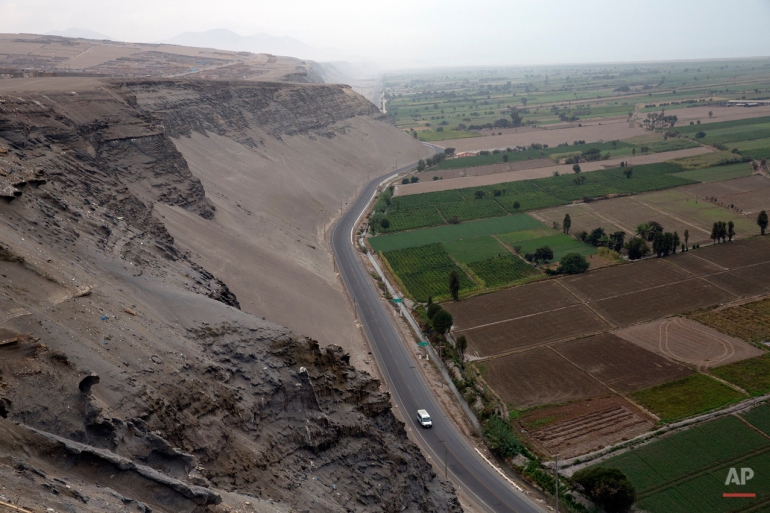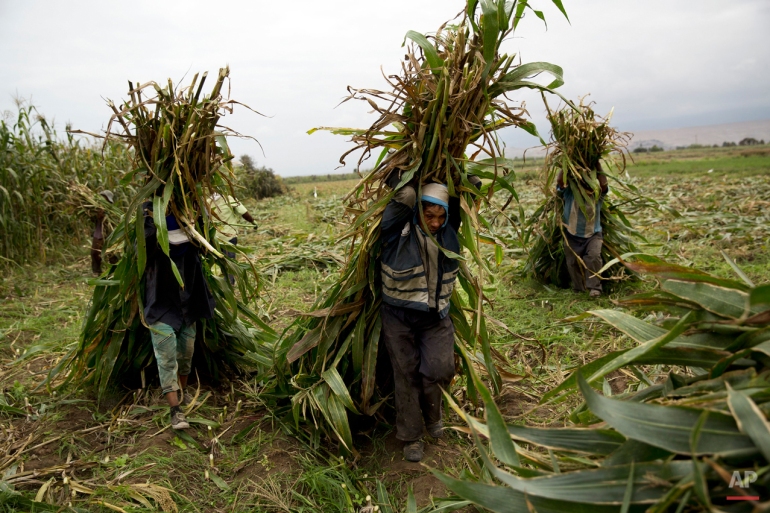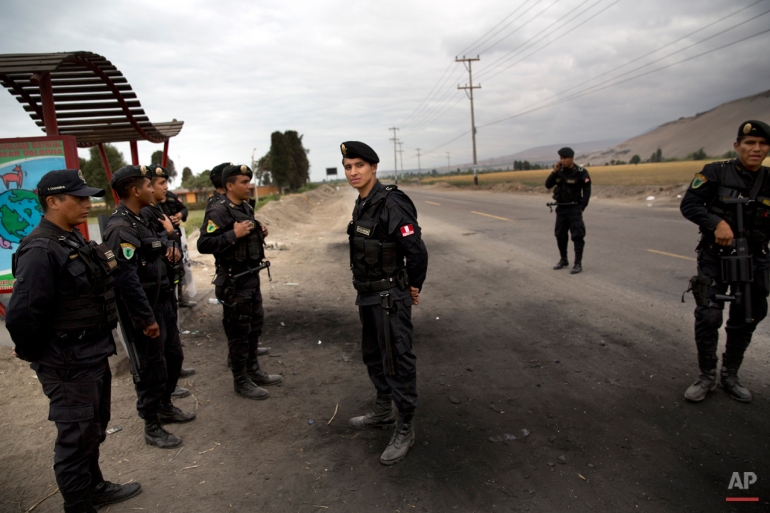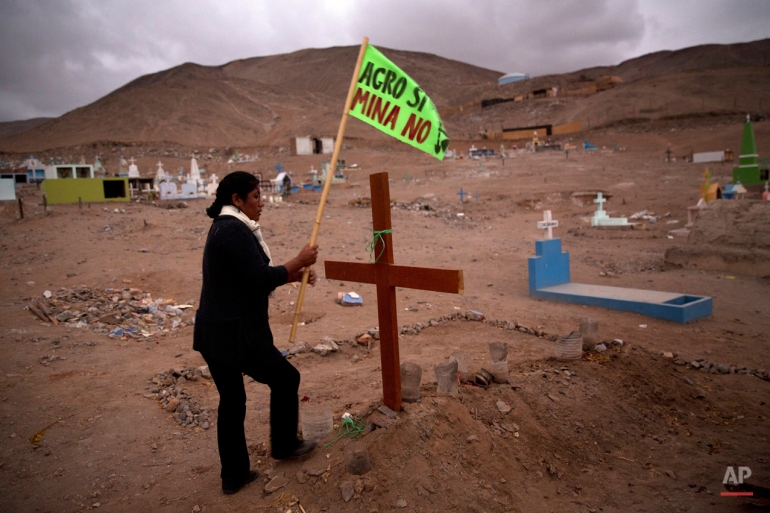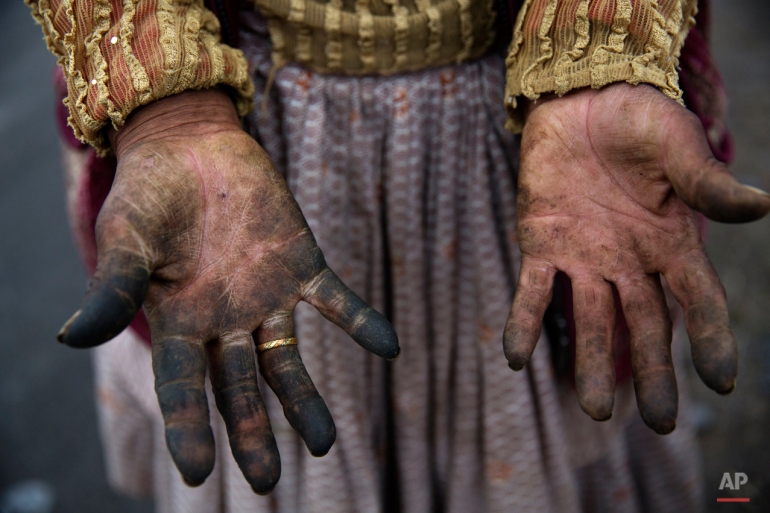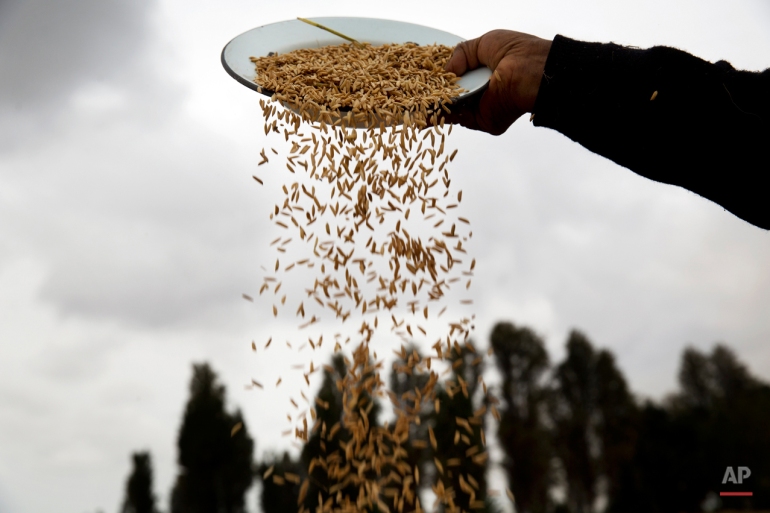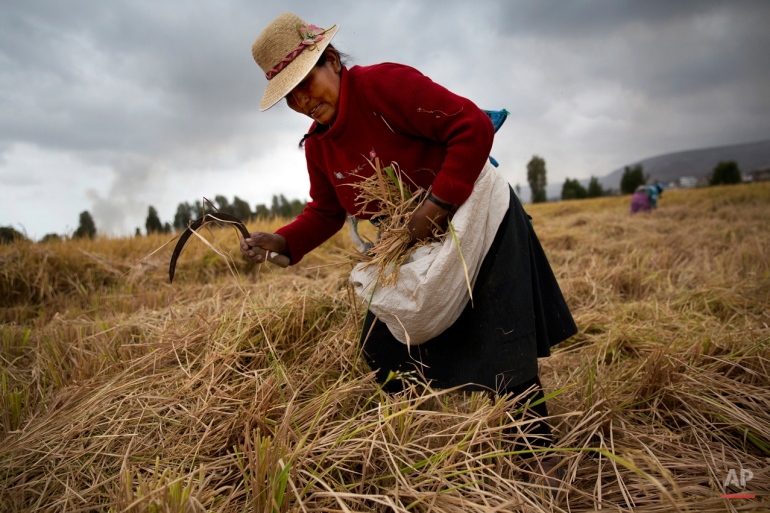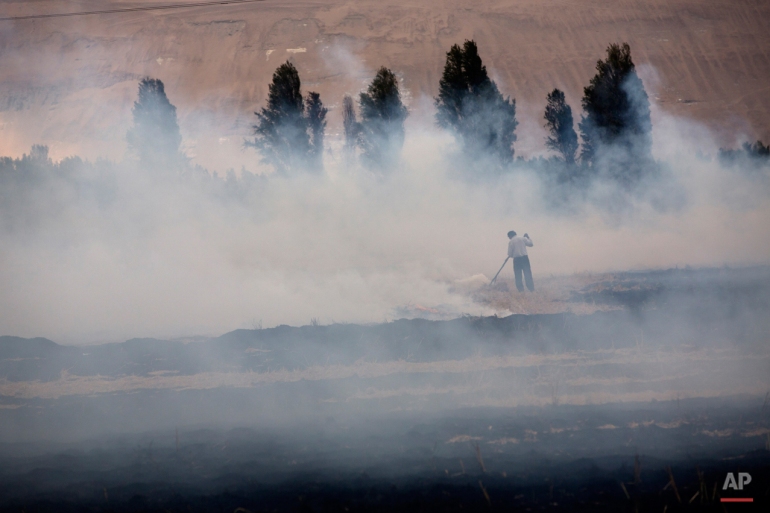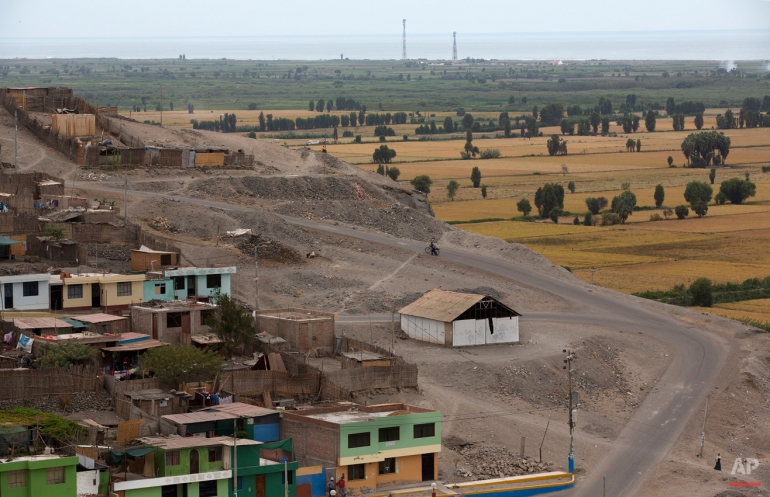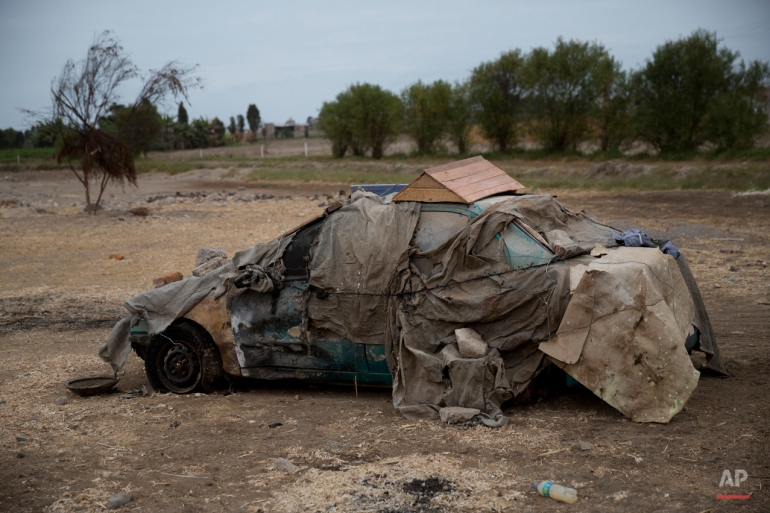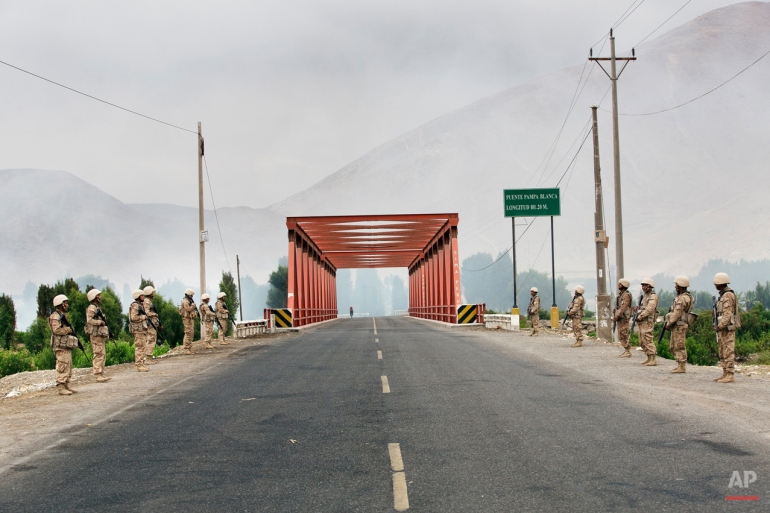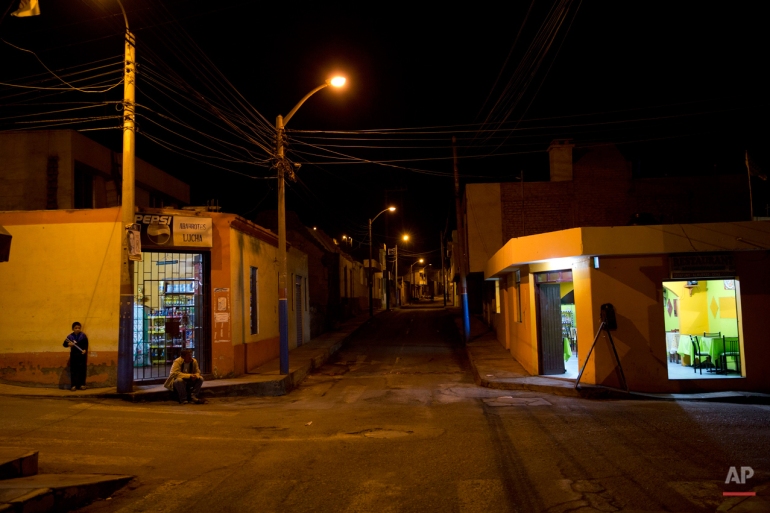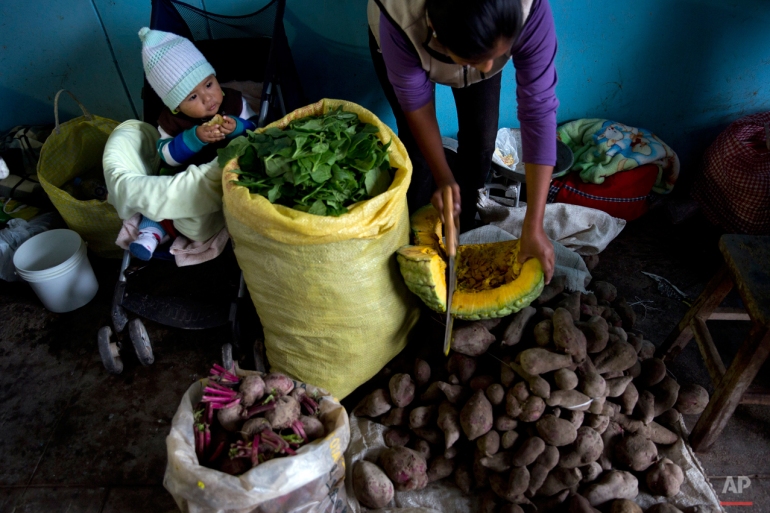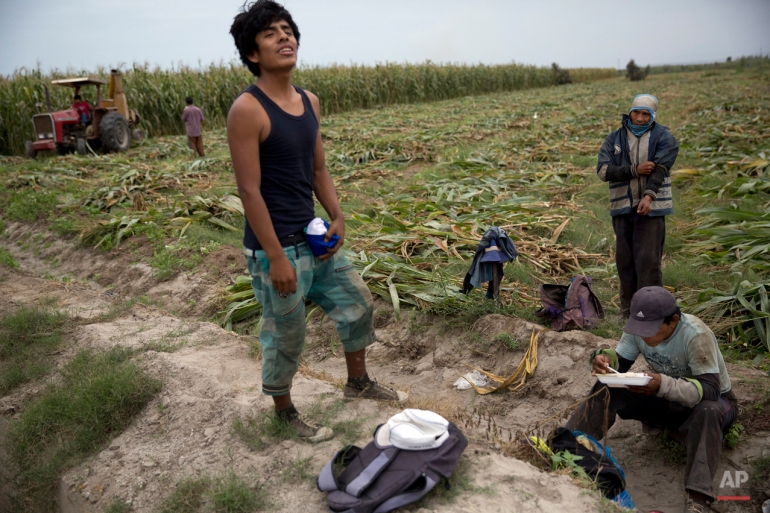Peru Anti-Mining Farmers
Photos by Rodrigo Abd
Publicado por AP http://blog.apimages.com/
A respite imposed by martial law after nearly two months of violent anti-mining protests has sent farmers in a fertile coastal valley of southern Peru back to their fields.
Most say they would be more than happy to sacrifice the current crop if it means preventing Mexico’s biggest mining company from going ahead with a copper extraction project that farmers fear will contaminate the Tambo Valley.
“Here, life is peaceful. He who works, even if he lacks an education, gets ahead. Why would we want a mine?” Domingo Condori said while taking a break from harvesting rice.
Farmers like Condori earn about $4,000 an acre on the crop, which has two growing seasons a year.
The government suspended civil liberties late last month as President Ollanta Humala sent in 2,000 soldiers to restore order in the valley, whose 47,000 residents are mostly farmers. Under the decree, public gatherings are illegal and security forces can search homes and make arrests without warrants.
“Farming is what gives us work, what gives us food to eat,” said a teenager named Luis, who participated in clashes with police and avoided police dragnets by hiding in abandoned houses in the hills or in the sugarcane fields by the ocean.
Dozens of young men like Luis, who agreed to talk only if not fully identified, would pummel police with rocks fired from slingshots while supporters stood behind them handing out bottles of vinegar to counteract police tear gas. The confrontations killed two farmers, a mason and a police officer and injured 263 officers and 119 farmers, according to the National Ombudsman’s office.
The mining company, Grupo Mexico, last month announced a 60-day suspension of its $1.4 million copper mining project and said it hoped to “find solutions” for moving forward.
The company says the project will not pollute the valley because it will use desalinated water from the Pacific for processing and return the water directly to the ocean.
Few locals believe the company. They think the mine will pollute crops and destroy their way of life. They feel betrayed by Peru’s president and many vow to keep up the resistance.
“Ollanta came to power in 2011 saying he would support agriculture and now he is doing the total opposite,” said Condori.
Click on any image below to launch the gallery.
- In this May 29, 2015 photo, a van drives on the Costanera Norte road, connecting Punta Bombon and Dean Valdivia, in the Tambo Valley, Arequipa, Peru. The road is sandwiched between the rich farmland of the valley and the poorer desert zone known as Pueblo Jovenes. (AP Photo/Rodrigo Abd)
- In this May 30, 2015 photo, farmers haul corn stalks used to feed cattle in Tambo Valley, Arequipa, Peru. A respite imposed by martial law after nearly two months of violent anti-mining protests has allowed farmers in a fertile coastal valley of southern Peru to get back to the crops they were neglecting. (AP Photo/Rodrigo Abd)
- In this May 30, 2015 photo, riot policemen stand guard at the entrance of the Punta Bombon village in Tambo Valley, Arequipa, Peru. The government suspended civil liberties late last month in the valley where public assembly is illegal and security forces to search homes and make arrests without warrants. (AP Photo/Rodrigo Abd)
- In this May 30, 2015 photo, Aracely Huayna, 36, works to place a flag with a message that reads in Spanish: “Agriculture Yes, Mining No” on a cross that adorns her father’s grave, in Tambo Valley, Arequipa, Peru. Huayna says her 61-year-old father died when he was hit by a stray bullet, during recent violent protests against mining in the area. She believes riot police are responsible for his death. (AP Photo/Rodrigo Abd)
- In this May 30, 2015 photo, Elena Lupez, 51, poses holding a photograph of herself and her late husband Ramon Colque, in Tambo Valley, Arequipa, Peru. Lopez says her husband lost his life during a violent protest against the mining project Tia Maria. She says he went to the protest to sell papa rellenas, and then joined in the protest. Lopez believes her 55-year-old husband died from a stray bullet shot by riot police, piercing his lung. (AP Photo/Rodrigo Abd)
- In this May 29, 2015 photo, day laborer Victoria Apasa, 72, shows her muddied hands from harvesting tomatoes in the Tambo Valley, Arequipa, Peru. “Here life is peaceful. He who works, even if he lacks an education, gets ahead. Why would we want a mine?” says farmer Domingo Condori. (AP Photo/Rodrigo Abd)
- In this May 29, 2015 photo, Julia threshes rice, missed by the combine harvester, in Tambo Valley, Arequipa, Peru. Farmers allow residents to thresh the grains missed by the combine, a practice that is known locally as “Chichiquiar”, and keep the grains for themselves. (AP Photo/Rodrigo Abd)
- In this May 29, 2015 photo, a woman reaps grain, after a combine harvester has made its pass, a practice that is called “Chichiquiar” among farmers in the Tambo Valley, Arequipa, Peru. Protesting farmers and laborers say they are happy to sacrifice the current crop if it means preventing Mexico’s biggest mining company from going ahead with a copper extraction project they fear will contaminate the Tambo Valley. (AP Photo/Rodrigo Abd)
- In this May 30, 2015 photo, a man burns a pasture after the rice harvest, to ready the field for planting potatoes in Tambo Valley, Arequipa, Peru. Life is peaceful in the valley whose 47,000 residents are mostly farmers. (AP Photo/Rodrigo Abd)
- In this May 30, 2015 photo, a man walks with his bicycle through the poorer desert zone of Dean Valdivia, overlooking the rich farmland of the Tambo Valley, Arequipa, Peru. The company, Grupo Mexicano, suspended its $1.4 million copper mining project for 60 days last month in the fertile coastal valley of southern Peru where extraction project was met with two months of violent anti-mining protests. (AP Photo/Rodrigo Abd)
- This May 29, 2015 photo shows an abandoned car in Punta Bombon in Tambo Valley, Arequipa, Peru. Residents of the coastal valley of southern Peru believe a projected copper extraction project will pollute their crops and destroy their way of life. They feel betrayed by the president and many vow to keep up resistance. (AP Photo/Rodrigo Abd)
- In this May 29, 2015 photo, soldiers stand guard near the Pampa Blanca bridge in Tambo Valley, Arequipa, Peru. The government suspended civil liberties late last month in the valley as President Ollanta Humala sent in 2,000 soldiers to restore order in the valley, after nearly two months of violent anti-mining protests. (AP Photo/Rodrigo Abd)
- In this May 30, 2015 photo, children playfully climb on busts of Peruvian national heroes, Jose Abelardo Quinonez Boqueron, from left, Francisco Bolognesi, and Miguel Grau, in the main square of Dean Valdivia, in the Tambo Valley, Arequipa, Peru. The government suspended civil liberties after nearly two months of violent anti-mining protests to prevent the mining company, Grupo Mexico, from implementing a copper mining project that they feared would pollute the the area. (AP Photo/Rodrigo Abd)
- In this May 29, 2015 photo, day laborer Tobia Colla chews coca leaves after a nine-hour day of harvesting tomatoes in Tambo Valley, Arequipa, Peru. (AP Photo/Rodrigo Abd)
- In this May 29, 2015 photo, two residents gather outside their homes, looking out at the empty streets in Cocachacra district in Tambo Valley, Arequipa, Peru. The government suspended civil liberties late last month in the valley as President Ollanta Humala sent in 2,000 soldiers to restore order in the valley, after nearly two months of violent anti-mining protests. Public assembly is illegal and security forces can search homes and make arrests without warrants. (AP Photo/Rodrigo Abd)
- In this May 29, 2015 photo, Abigail Torres clangs on the lid of a pot to protest the 60-day martial law in Tambo Valley, Arequipa, Peru. The Peruvian government imposed martial law after nearly two months of violent anti-mining protests in which four with killed and more than 350 people injured. (AP Photo/Rodrigo Abd)
- In this May 29, 2015 photo, a woman cuts a squash while working in the local market as her son watches, in Cocachacra district in Tambo Valley, Arequipa, Peru. A respite imposed by martial law after nearly two months of violent anti-mining protests has allowed farmers in the fertile coastal valley of southern Peru to get back to the crops they were neglecting. (AP Photo/Rodrigo Abd)
- In this May 29, 2015 photo, a statue of Jesus crowns a hill, overlooking the Punta de Bombon district in Tambo Valley, Arequipa, Peru. Grupo Mexicano says that its mining project in the in Tambo Valley would provide 3,500 temporary jobs during construction and another 2,600 permanent positions over the estimated 18 years the mine functions. But few locals believe that. They think, instead, that the mine will pollute their crops and destroy their way of life. (AP Photo/Rodrigo Abd)
- In this May 30, 2015 photo, farmers prepare to collect corn leaves to use as forage for cattle in Tambo Valley, Arequipa, Peru. Most say they’re more than happy to sacrifice the current crop if it means preventing Mexico’s biggest mining company from going ahead with a copper extraction project they fear will contaminate the Tambo Valley. (AP Photo/Rodrigo Abd)
- In this May 30, 2015 photo, the foot of a day laborer is surrounded by garlic bulbs as she works in a field in the Tambo Valley, Arequipa, Peru. The woman earns 20 US dollars for a 9 hour workday, that includes a 30 minute break to eat. (AP Photo/Rodrigo Abd)
- In this May 30, 2015 photo, laborers sit in a tractor attached to a chaff cutter in Tambo Valley, Arequipa, Peru. A respite imposed by martial law after nearly two months of violent anti-mining protests has allowed farmers in the fertile coastal valley of southern Peru to get back to the crops they were neglecting. (AP Photo/Rodrigo Abd)

Nosotros somos GRUFIDES!
Mantente en contacto
Contáctanos
info (@) grufides.pe
+51 076 34 2082
+51 976 465 169
RPM: #767539
Cajamarca - Perú


